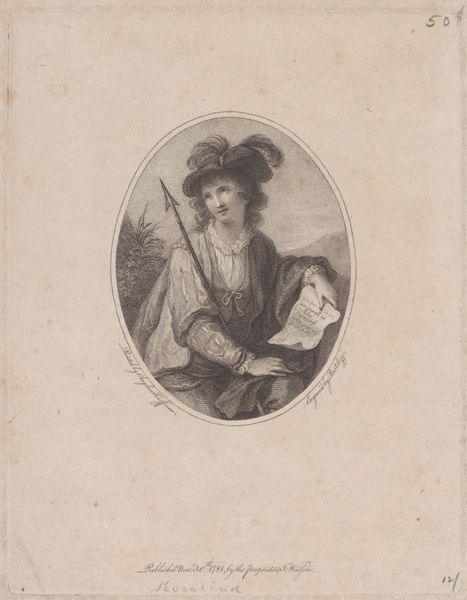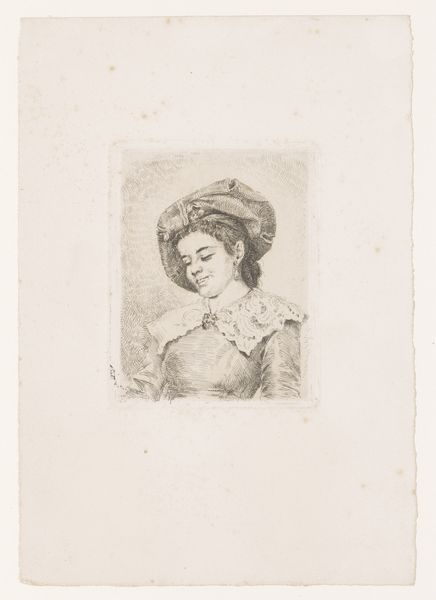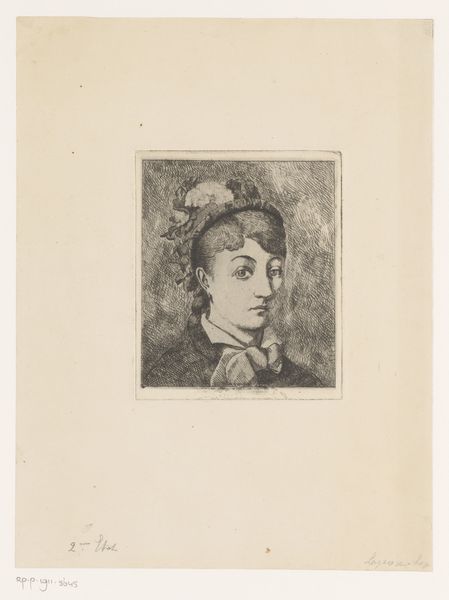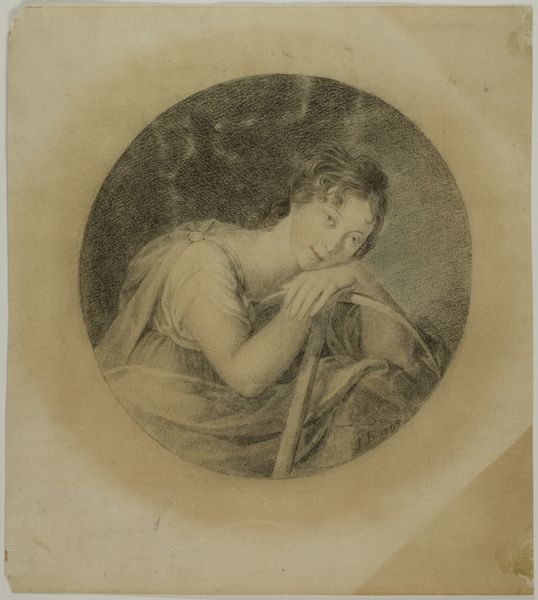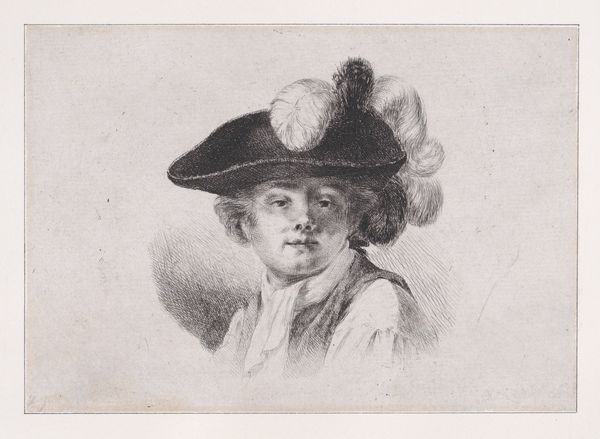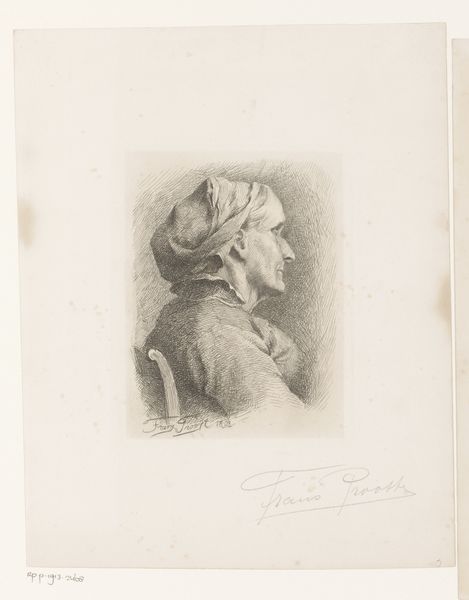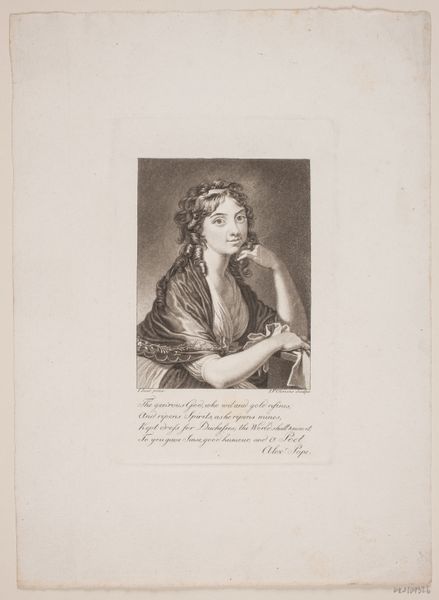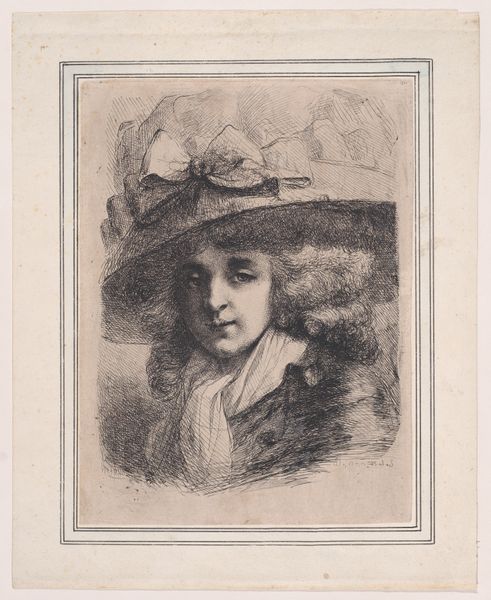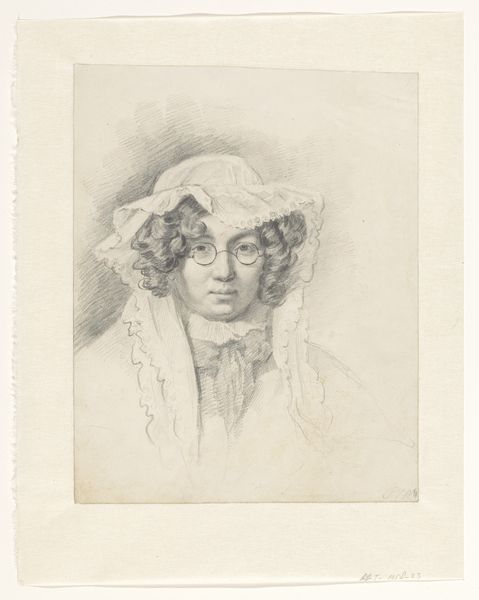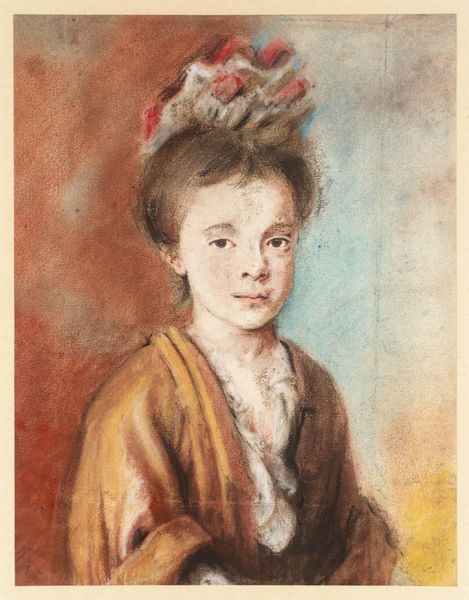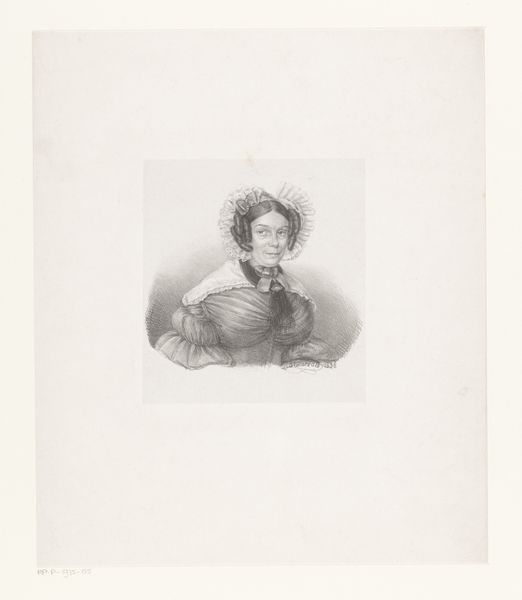
drawing, print, paper, watercolor, graphite
#
drawing
# print
#
figuration
#
paper
#
oil painting
#
watercolor
#
coloured pencil
#
graphite
#
genre-painting
#
academic-art
#
realism
Dimensions: 259 mm × 176 mm
Copyright: Public Domain
Curator: This is "Portrait of a Peasant Woman," created in 1840, now residing here at The Art Institute of Chicago. It's a beautiful example of genre painting. Editor: There’s an immediate intimacy about it, even if she looks away. The soft watercolor palette and her direct gaze create a quiet but powerful impression. Curator: Absolutely. Genre paintings during that period often served a documentary function, portraying everyday life. But this image, crafted with graphite, watercolor, and colored pencil, transcends simple representation. What's she carrying, exactly? Editor: Bundles of something... perhaps reeds or grain? These suggest a rural existence. It’s important to look at how the artist is representing labour here – is it glorified, or is there a suggestion of hardship? Her weary, almost melancholic gaze could point to the latter. What strikes me most is the careful rendering of the shawl draped over her arms. The artist invested serious work into representing that material. Curator: It’s precisely this tension between idealization and the reality of labor that makes it compelling. We see similar depictions in literature of the time, struggling to define rural identities within broader social changes. There’s almost an internal conflict, isn’t there? Editor: It is worth considering whether this romantic idealisation helps erase other critical elements that are important when considering labor such as unionising, protesting, or activism, etc. Perhaps what appear as reeds in bundles might also act as kindling in a coming political blaze? I might also be overreaching here... Curator: No, I find it interesting to examine how "invisible labour" connects here in terms of not just this particular sitter or her station within 19th century society, but indeed how it intersects with contemporary political discourses regarding class and identity politics. The work itself presents us with ways of examining how it fits in a broader culture context Editor: Thinking about this piece in terms of material, labor, and representation, I keep coming back to that shawl. Its prominence in the composition is a clear indicator of the artist's values. Curator: Yes. It’s through close examination of such ‘minor’ details that we are allowed fresh understandings of the woman portrayed in this work, how they might affect the piece's overall cultural message and potential interpretation from distinct points of intersectionality.
Comments
No comments
Be the first to comment and join the conversation on the ultimate creative platform.
